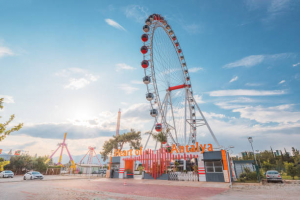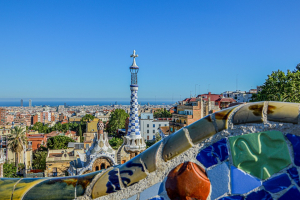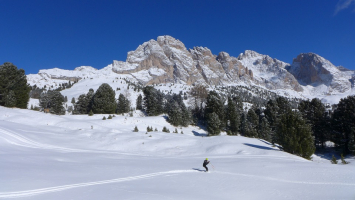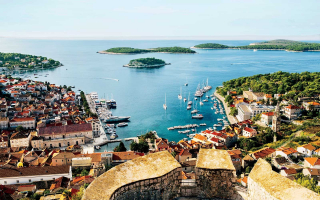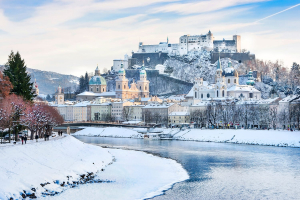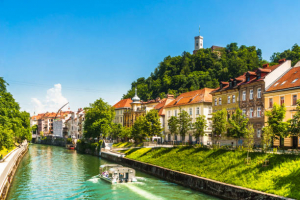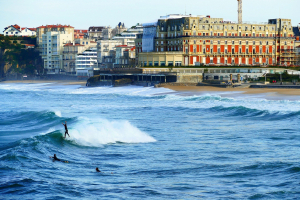Top 13 Best Railway Stations in Europe
Some genuinely stunning railway stations in Europe are more than just a convenience and a starting point for getting from point A to point B; they also ... read more...represent the art and culture of the nations in which they are located. Railway stations can be situated at the start and finish of a journey. They enable people from all over the world to go to Europe and are frequently architectural marvels. Let's take your train ticket to one of Europe's most gorgeous railway stations.
-
This breathtaking piece of architecture constructed by the renowned Catalan architect Santiago Calatrava is absolutely worth seeing. Liège-Guillemins is not only one of the busiest train stations in the Wallonia Region, but it is also an important railway hub for high-speed trains. It is one of the country's most significant hubs and one of four Belgian stations on the high-speed rail network. Every day, 15,000 passengers use the station, making it the eleventh busiest in Belgium and the third busiest in Wallonia. The National Railway Company of Belgium operates it.
High-speed trains were introduced near the end of the twentieth century, necessitating the construction of a new station because the current platforms were too narrow. The new station, designed by Spanish architect Santiago Calatrava, was dedicated on September 18, 2009, with a performance by stage director Franco Dragone. It consists of nine tracks and five platforms. The tracks surrounding the station have all been upgraded to allow for high-speed arrival and departure. Steel, glass, and white concrete are used to construct the new station. It has a massive arch that is 160 meters long and 32 meters high. The construction cost €312 million.
Liège-Guillemins is also a TEC Bus hub, with about 1620 buses transporting 15,000 passengers passing through every day. It is one of Europe's rare railway stations that is immediately connected to a highway. The link provides direct access to the station's 850-space parking deck. There is no bike path from the station to the city.
Location: Liege, Belgium
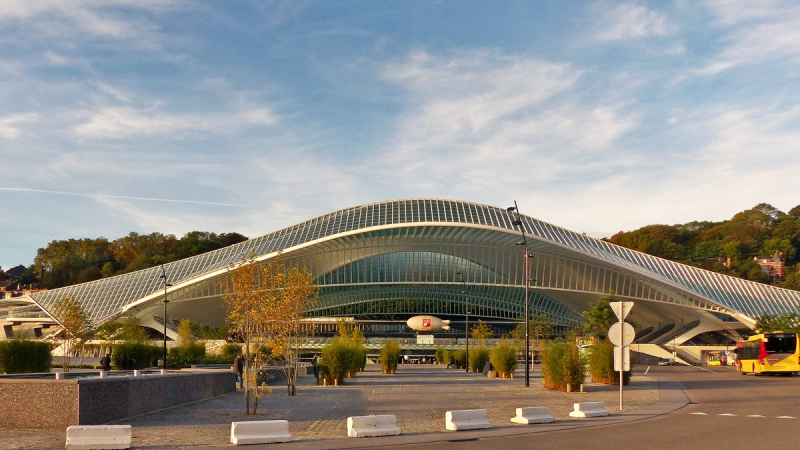
rail-pictures.com 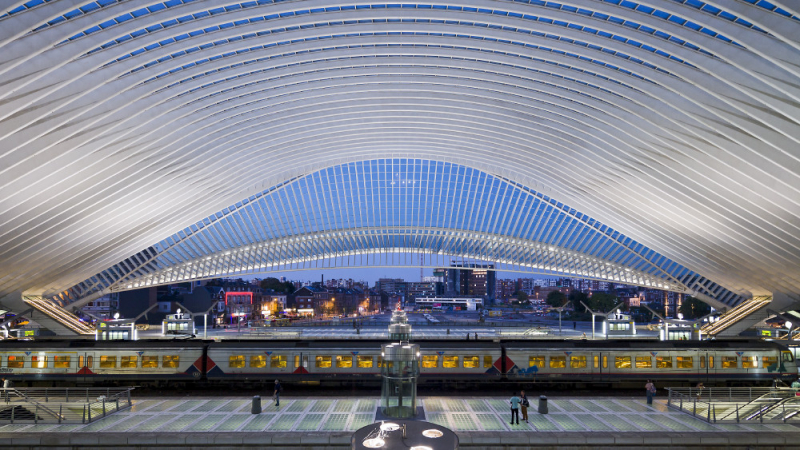
ArchDaily -
This distinctive, front-facing feature is frequently the most remembered aspect of Atocha's design, and it is how it is so easily recognized even by people unfamiliar with Madrid. The major railway station, however, did not always appear this way and had a poor origin. Originally, the pre-existing edifice was little more than a plain wooden railroad station. Furthermore, the railway station was initially meant for royalty, hence it began as a luxury station that was not available to the general people. Before rail travel had expanded to the point that it needed to be transformed into a major transportation hub, Atocha was known as Madrid's Central Station.
It is not only its design that distinguishes it from every other railway station in the globe; the characteristics - both living and non-living - throughout the interior of Atocha also contribute to many people's positive travel experiences. Atocha was erected in 1851 as the city of Madrid's first train station. This was one of the earliest significant transit hubs, and it also served as the foundation for every additional railway erected surrounding the city, establishing it as a permanent building. Its distinct architecture was influenced by late-nineteenth-century ironworks, which may be observed in the middle nave.
Trains are one of the oldest types of land transportation, and railway stations are literally at a fork in the road. They bring travelers into major cities and out to the surrounding countryside. However, there is no doubting how wonderful a railway station can be, especially when it comes to the world's most beautiful train station. The Atocha Train Station, located in the heart of Madrid and affectionately known as the "Iron Heart", is without a doubt the most gorgeous railway in the world. Despite several architectural changes over its history, it remains a stunning feature of the city to this day.
Location: Madrid, Spain
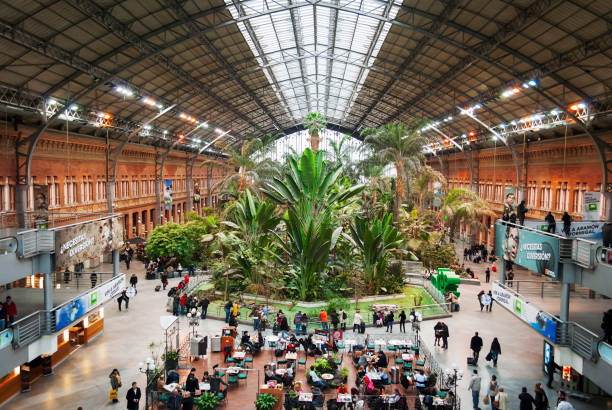
istockphoto 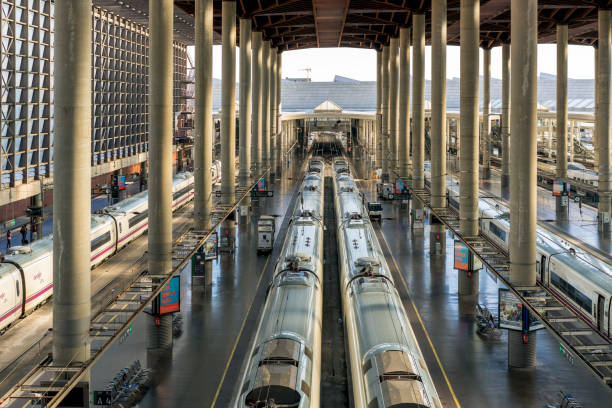
istockphoto -
Antwerp Central is the name of the major railway station in Antwerp, Belgium. The station is currently largely recognized as the best example of railway architecture in Belgium, despite the fact that the unusual eclecticism of the influences on Delacenserie's design made attributing it to a certain architectural style problematic. The station is widely recognized as the best example of railway architecture in Belgium, despite the fact that the unusual eclecticism of the influences on Delacenserie's design made attributing it to a certain architectural style problematic. In W. G. Sebald's novel Austerlitz, the capacity to comprehend the whole variety of designs that may have influenced Delacenserie is used to demonstrate the brilliance of the story's protagonist, a fictitious architectural historian.
It is not only its design that distinguishes it from every other railway station in the globe; the characteristics - both living and non-living - throughout the interior of Atocha also contribute to many people's positive travel experiences. Atocha was erected in 1851 as the city of Madrid's first train station. This was one of the earliest significant transit hubs, and it also served as the foundation for every additional railway erected surrounding the city, establishing it as a permanent building. Its distinct architecture was influenced by late-nineteenth-century ironworks, which may be observed in the middle nave.
Location: Antwerp, Belgium
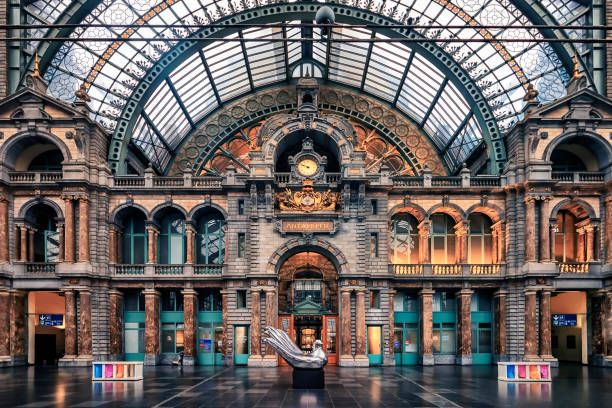
istockphoto 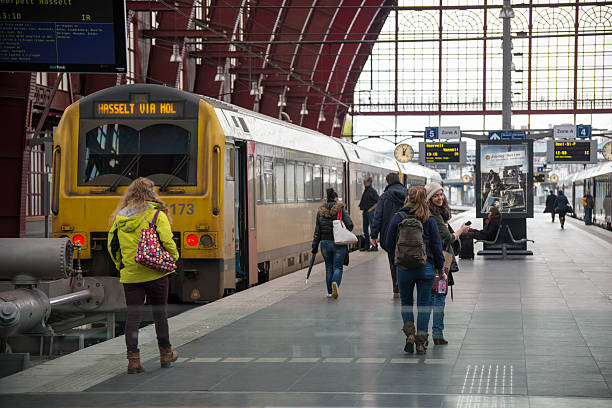
istockphoto -
Haydarpaşa station is a railway station in Istanbul that served as the major city terminal for trains traveling to and from Turkey's Anatolian region until 2012. It was formerly the busiest railway station in Turkey. Sirkeci station on the European side of the city offered rail services to and from the Thracian side of the nation. The station building still houses the State Railways' District 1 offices, although it has not been used since a fire in 2010, and its future is unknown.
The Haydarpasa train station is located right on Istanbul's Asian coast, which is readily accessible by ferry or road (always busy). A modest fully restored steam locotender is parked outside. When you enter, you can see the ticket offices, several bars of level crossings in gold alloy, benches to sit on, signs with the routes and rates; additionally, the tiny café and barber were retained in the 1940s style. It is currently a depot for numerous abandoned trains, however several lines with medium-east destinations remain operational. In reality, every week, a train named the Trans Asia-Express departs from China-Beijing, traveling through Ankara, Tabriz, and Tehran (Iran). Certainly, the station was previously considerably more active, since it was the arrival site of the famed "Oriente Express" train, which departed from London and traveled to Istanbul via the major European capitals.
Location: Istanbul, Turkey
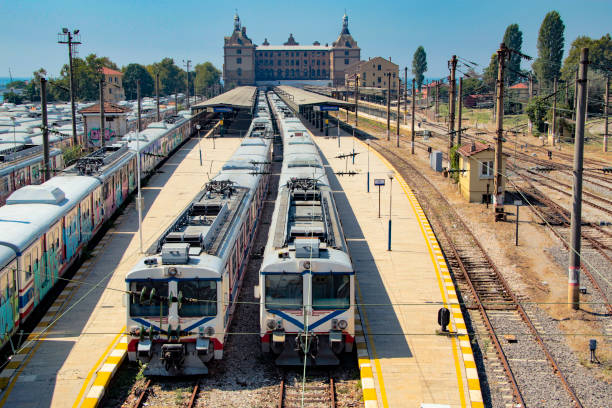
istockphoto 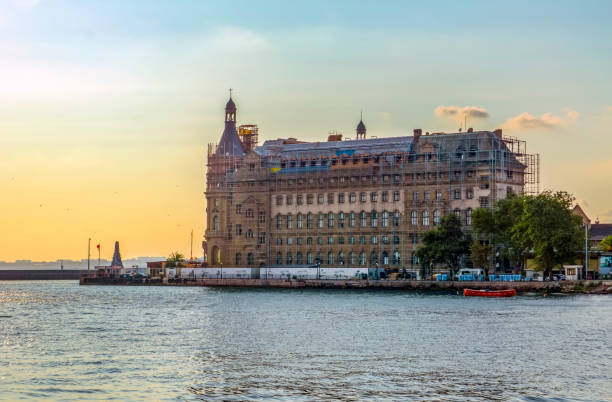
istockphoto -
Zagreb Glavni kolodvor (Croatian meaning Zagreb main station) is Zagreb, Croatia's principal railway station. In 1892, it was built in the neoclassical style. It is the biggest railway station in Croatia, measuring 186.5 meters long. It was rebuilt twice, once for the Summer University Games in 1987 and again in 2006. Public buses, taxis, and local and regional railways are available here. A grocery, bakery, subterranean retail center, restrooms, showers, luggage storage, and a lost-and-found office can be found at Zagreb Central Train Station. It is the largest station in Croatia and the primary hub of the Croatian Railways network, located 1 km south of the city's main plaza. Zagreb's main train station is a sight to see.
This structure, which is only a 10-minute walk from the city center, is a great eye-catcher, commanding the attention of everyone who passes by. The Zagreb Glavni Kolodvor, built in magnificent neo-classical architecture, is a lovely remembrance of the days when the city was a stop on the world-famous Orient Express. The station has undergone various restorations over the years to retain the classic design while keeping up with the demands of time, so it is not only a piece of beauty but also one of the most contemporary railway stations in Croatia!
Location: Zagreb, Croatia
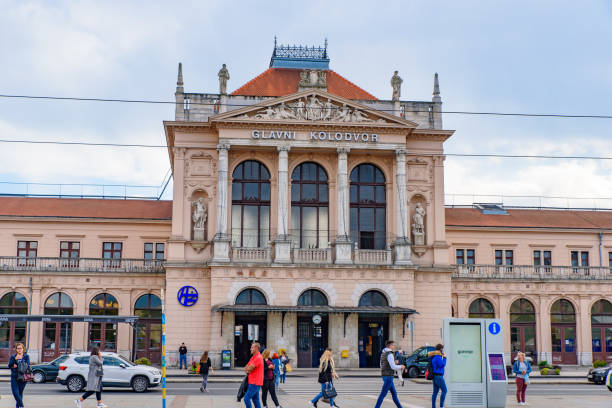
istockphoto 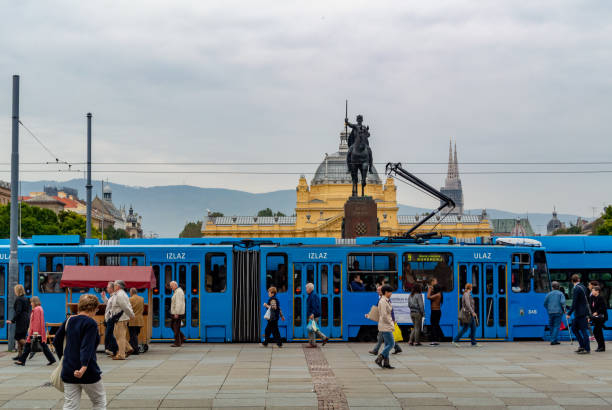
istockphoto -
Limoges-Bénédictins is the city's primary railway station. It is on the Orléans-Montauban railway line. It was called Bénédictins after a Benedictine abbey that was closed during the French Revolution. In the 1850s, the CF du PO established the city's first railway line. The first station, constructed on wood, opened on June 16, 1856. In 1860, the first stone-built station opened.
Roger Gonthier, the architect, created the Bénédictins station. The station is notable for being built above the 10 railway lines rather than adjacent to them. To support the station structure, a massive 90 by 78 metre platform was erected above the railway. The structure is composed of a concrete skeleton that is filled with limestone. The dome that covers the passenger concourse is composed of a copper-covered metallic structure. A 67-metre-tall clock tower with thirteen storeys stands on the southwest corner. It is supported by a dome, which is supported by a five-metre-tall vase. There are four 4-metre-wide clocks beneath these.
The first two stories are offices. The view from the top floors is breathtaking, taking in the city of Limoges, the agglomeration, and the Vienne valley. The town hall, the churches of Saint-Michel and Saint-Pierre, the Gay-Lussac high school, the city of Coutures, the Cathédrale Saint-Étienne de Limoges, the Bastide, The Technopole, and the castle of the Bastide are all visible.
Location: Limoges, France
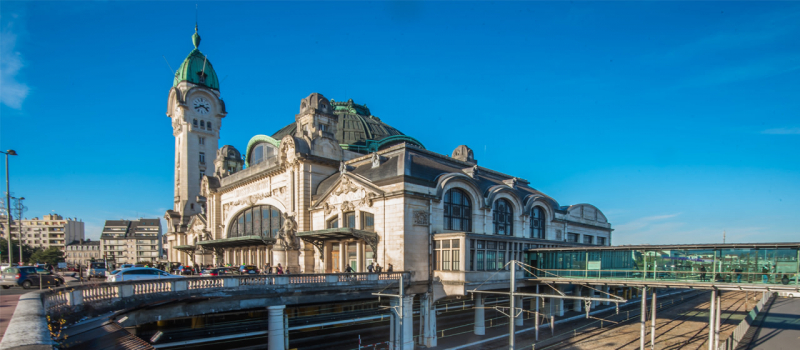
Pinterest 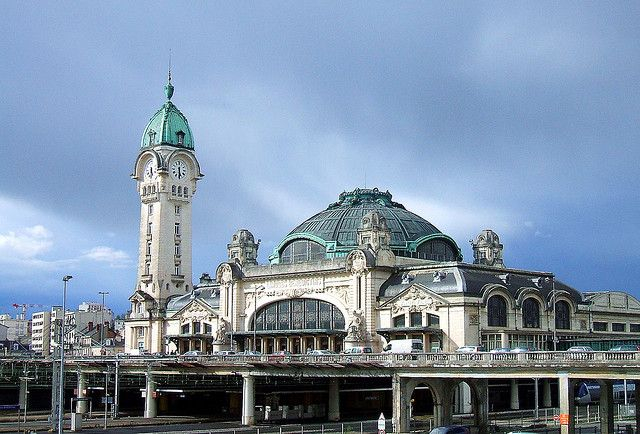
versatelnetworks.com -
On the grounds of a medieval Benedictine monastery, the São Bento Railway Station in Porto opened to the public in 1916. The edifice exudes the inherent sorrow and nostalgia of the city. Although the train station is very appealing from the outside, the true beauty is found indoors. The main hall is stunning, with over 20,000 tiles depicting Portugal's history. Because So Bento Railway Station is located in the city center, you will most likely stroll past its multiple times during your visit. Don't skip out on exploring its main hall. From São Bento station, you may take a train to the Douro Valley or any of the region's lovely villages. We recommend spending time at Guimares, Braga, and Viana do Castelo if you have the time.
The station lies in Porto's Historic Center, which has been designated as a UNESCO World Heritage Site and a National Monument of Portugal. This structure was built over a period of years, beginning in 1904, according to plans by architect José Marques da Silva. Jorge Colaço designed and painted the massive azulejo tile panels, which were finished in 1916 and used to launch the station. The paintings illustrate historical events throughout the country, while the multicolored panels depict pastoral scenery with people from diverse locations.
São Bento is the primary terminal of Porto's suburban railway lines, as well as the western end of the picturesque Douro line between Porto and Pocinho. Trains arriving in Lisbon arrive at Campanh (the national railway station), although there is subsequent service to São Bento via a local train.
Location: Porto, Portugal
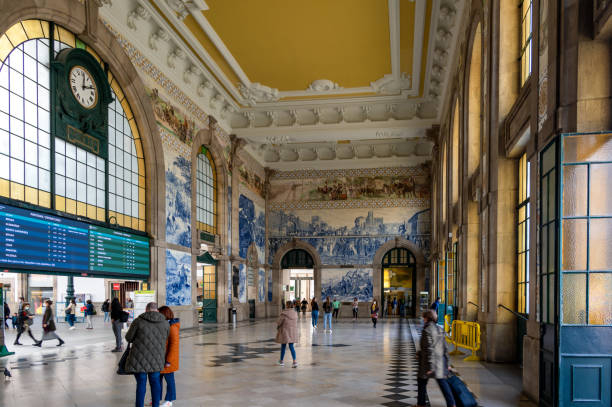
istockphoto 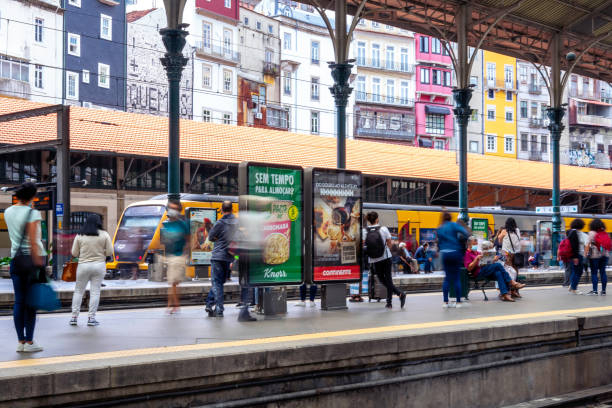
istockphoto -
St. Pancras International, often known as London St Pancras or St Pancras International, is a central London train terminal on Euston Road in the London Borough of Camden. Eurostar services from Belgium, France, and the Netherlands to London terminate here. The station was built by the Midland Railway (MR), which had a large rail network in the Midlands and North of England but no direct connection into London. Following train traffic issues caused by the 1862 International Exhibition, the MR decided to construct a route from Bedford to London with its own station.
St Pancras is located in the London Borough of Camden, on a site that is deeper than it is broad and is oriented north-south. The south is bounded by Euston Road (part of the London Inner Ring Road), with the St Pancras Renaissance Hotel as its frontage, while the west is bounded by Midland Road, which separates it from the British Library, and the east is bounded by Pancras Road, which separates it from King's Cross station. The train shed is elevated 5 meters above street level behind the hotel, and the space below comprises the station undercroft, which houses the majority of the shops and restaurants, as well as the Eurostar departure lounge.
Eurostar's lengthier international platforms continue into Barlow's train shed, whereas the other platforms cease at the southern end of the 2005 addition. The international platforms do not span the whole width of the Barlow train shed, and portions of the floor have been opened up to let natural light to enter the new ground-level concourse below. The Eurostar arrival and departure lounges are located beneath these platforms, close to The Arcade, a concourse fashioned from the historic station undercroft that spans the length of the Barlow train shed on the western side. The Arcade's southern end connects to the western ticket hall of King's Cross St Pancras tube station.
Location: London, England
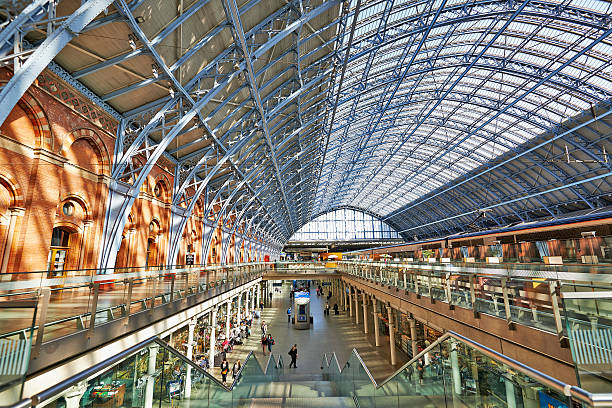
istockphoto 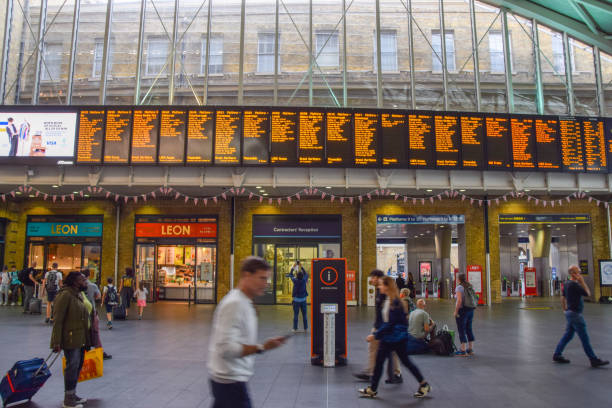
istockphoto -
The Gare de Lyon, formally Paris-Gare-de-Lyon, is one of Paris's six major mainline train stations. According to SNCF projections for 2018, it handles 148.1 million passengers per year, with SNCF trains and RER D accounting for roughly 110 million and RER A accounting for 38 million, making it France's second busiest station after the Gare du Nord and one of the busiest in Europe.
On numerous levels, it is regarded as a great example of its era's architecture. The huge clock tower above one corner of the station is most recognizable, resembling the clock tower of the Palace of Westminster, which houses Big Ben. The station features the Le Train Bleu restaurant, which has been serving beverages and meals to travelers and other visitors in an opulent setting since 1901.
The station is located in the 12th arrondissement of Paris, on the right side of the Seine. It is the northern terminal of the Paris-Marseille railway, which opened in 1849. It is named after the city of Lyon, which serves as a stop for many long-distance trains departing from here, the majority of which are bound for the south of France. High-speed TGV trains connect the station to Southern and Eastern France, Switzerland, Germany, Italy, and Spain. Regional trains, the RER, and the Gare de Lyon Métro station are also housed at the station. Main line trains depart from 32 platforms divided into two halls: Hall 1, the older train shed, has tracks labeled with letters from A to N, while Hall 2, the newer addition, has tracks numbered from 5 to 23. There are four more RER platforms beneath the main lines.
Location: Paris, France
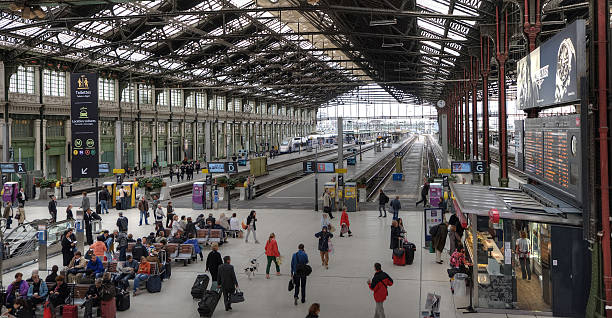
istockphoto 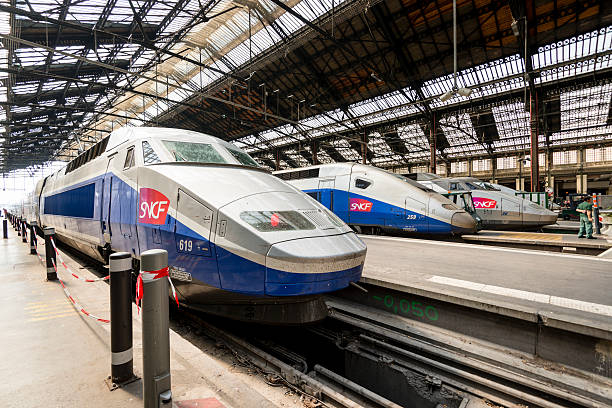
istockphoto -
Milan's principal railway station, Milano Centrale, is one of Europe's most identifiable transit terminals, thanks to its imposing size and 1930s-era design. Built under Mussolini's fascist administration, the edifice is supposed to portray strength and superiority, with immense halls of arched marble and massive glass and steel canopies. Because this is Milan, there are also high-fashion stores and apparently limitless shopping choices, as well as handy eating alternatives. While the station is intimidating and frequently crowded with tourists and business travelers, it is also very user-friendly for first-time visitors coming in and departing from the city.
Milano Centrale Station is located in the city's northeast, just north of Giardini Park (Giardini Pubblici Indro Montanelli). The neighborhood is relatively industrial and not very attractive, although there are several hotels and restaurants nearby, and the Isola district immediately west of the station has become one of the city's most popular attractions. While Milano Centrale is the largest and busiest, the city also has two additional "central" train stations: one at Garibaldi Park, just south of Centrale, and one on the west side of town in Cadorna.
Despite its huge and intimidating appearance, Milano Centrale is easy to traverse, with clear signage and visible train departure reading boards that keep visitors informed of any delays or cancellations. There are two major floors and a mezzanine at the station. When you arrive, take a minute to orient yourself and check the current train schedule information, which is shown on numerous huge ticker-style reading boards located around the station. There will be another sign at your platform (the train platform area is accessible from the entry level); this should correspond to the information on the reader boards around the station but may be more up to date.
Location: Milan, Italy
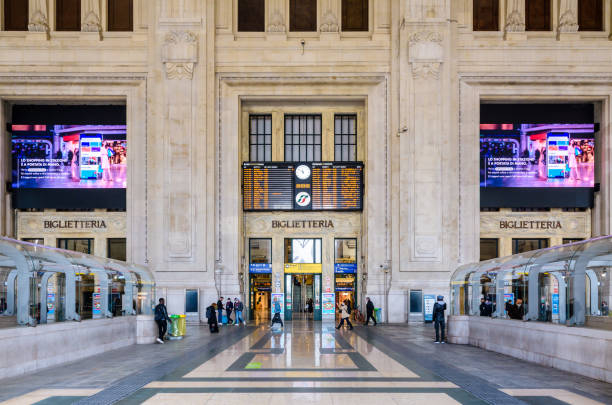
istockphoto 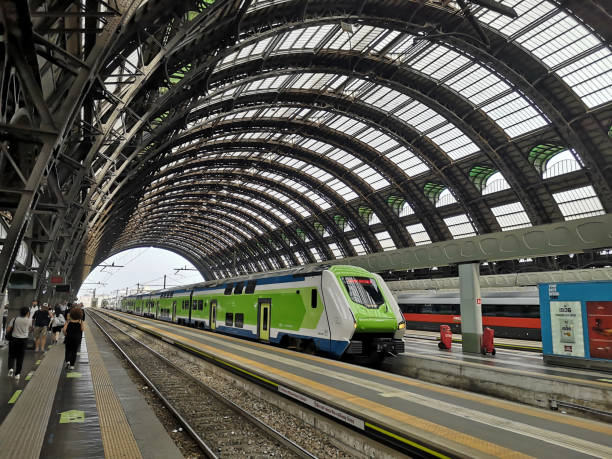
istockphoto -
Sirkeci Station is a Turkish State Railway TCDD terminal station. International, domestic, and regional trains all go west from here. Sirkeci Station rose to popularity as the final stop of the famed Orient Express. Sirkeci Station has been a stop on the Marmaray railway line since 2013. The Marmaray line passes beneath the Bosphorus strait and connects Istanbul's European and Asian parts in a matter of minutes.
The station formerly had four platforms with a vaulted ceiling, cast-iron supports, and painted tiles. It was also contemporary in that it had gas lights and large tile stoves for heating in the winter. The station restaurant, which provided delectable meals, became a popular hangout for artists and celebrities of all stripes.
Until 2013, the terminal served as the primary link between the Turkish railway network and the rest of Europe. The service between Istanbul and Thessaloniki, Greece, is one of the two primary connecting lines. The Bosphorus Express traveled daily between Sirkeci and Bucharest's Gara de Nord. Wagons linked to the Bosphorus Express train created connections to Sofia and Belgrade. There are other marketplaces where items and specialties from all across Turkey are sold on occasion. Furthermore, the whirling dervishes perform in the big, magnificent rooms of the reception building. In Istanbul, see the Whirling Dervish Show and the Mevlevi Order's magnificent "Sema" ritual. The spinning dancers' routine is based on an 800-year-old tradition. It is really a spiritual event rather than a tourist attraction.
Location: Istanbul
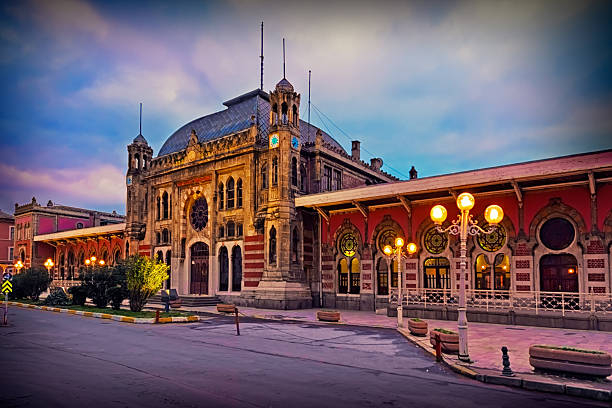
istockphoto 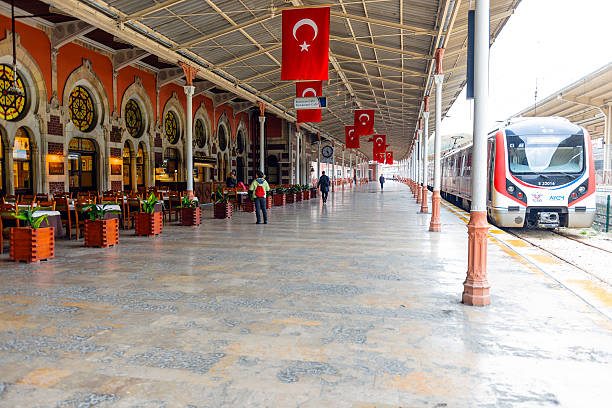
istockphoto -
The primary station for commuter rail and long-distance trains departing from Helsinki, Finland, is Helsinki Central Station. The station serves roughly 400,000 individuals every day, with approximately 200,000 of them being passengers. It is the terminal for all trains in the Helsinki commuter rail network as well as all long-distance trains in Finland destined for Helsinki. The metro station Rautatientori (Central Railway Station) is also housed in the same structure.
It is still the busiest building in the country and a renowned gathering place today. The historical atmosphere and constantly developing services make it simple to enjoy your time at the station, whether you are traveling from far or near, passing through or staying. The primary station for commuter rail and long-distance trains departing from Helsinki, Finland, is Helsinki Central Station. The station serves roughly 400,000 individuals every day, with approximately 200,000 of them being passengers. It is the terminal for all trains in the Helsinki commuter rail network as well as all long-distance trains in Finland destined for Helsinki. The metro station Rautatientori (Central Railway Station) is also housed in the same structure.
The Helsinki Central Station serves as a major transportation hub for commuter trains, long-distance trains, and metro transportation across the Helsinki metropolitan area. The station receives 240 thousand people every day, making it the most frequented structure in Finland as a whole. Train passengers account for almost half of the visits. Every daily, about a hundred long-distance trains and over 850 commuter trains arrive and depart from the station.
Location: Finland
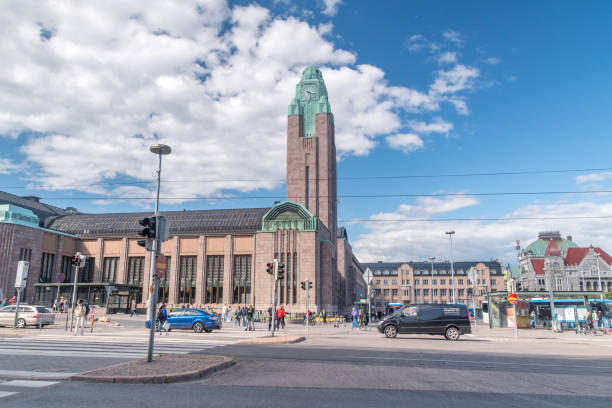
istockphoto 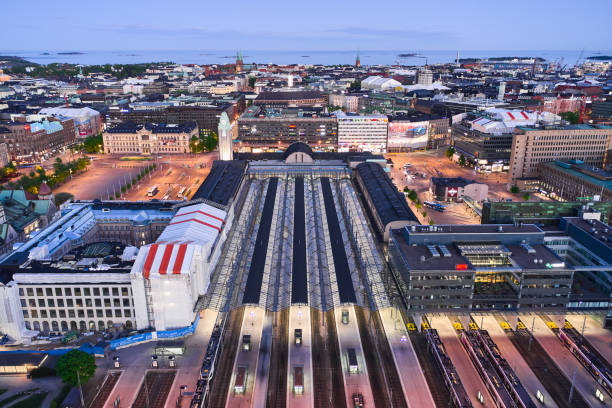
istockphoto -
Amsterdam Central Station is the city's major train station. At the same time, it is the busiest station in the Netherlands. The majority of trains stop here. So, this is where you should begin your adventure to the Netherlands. Amsterdam Central is the city's heart, not only because of its position, but also because it serves as a transportation hub for several railway lines, bus lines, taxis, and linkages to the airport and anything else you can think of, including boat tours. The station, which opened to the public in 18889, is designed in the Neo-Renaissance style, while increased traffic necessitated contemporary modifications and facilities. An insider tip: Allow plenty of time if you need to change trains in Amsterdam Central. The platforms are far apart, and you must navigate escalators while carrying your stuff. There are departure boards, however they are not always visible.
National and international railway services at Amsterdam Centraal are provided by NS, the principal rail operator in the Netherlands. Amsterdam Centraal is the northern terminal of the local public transportation company GVB's Amsterdam Metro lines 51, 53, 54, and halt 52. It is also served by a variety of GVB tram and ferry lines, as well as GVB, Connexxion, and EBS local and regional bus services. The Amsterdam Centraal was built in 1889 and designed by Dutch architect Pierre Cuypers. It has a Gothic, Renaissance Revival station structure and a 40-metre-long cast iron platform canopy.
Location: Netherlands
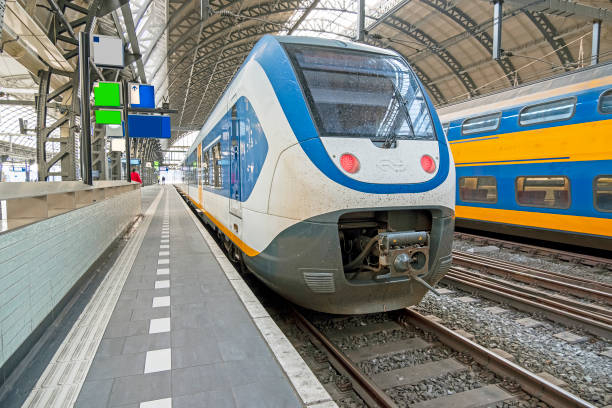
istockphoto 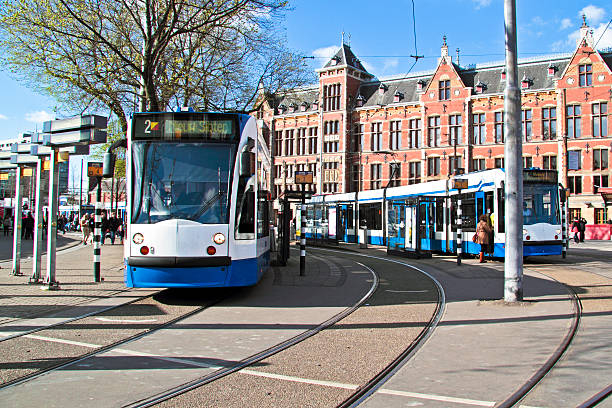
istockphoto















